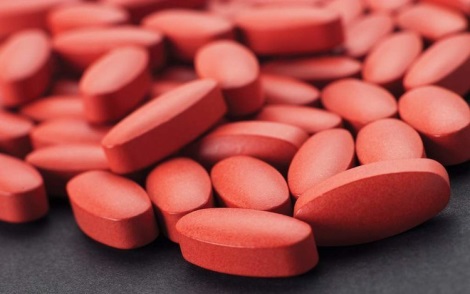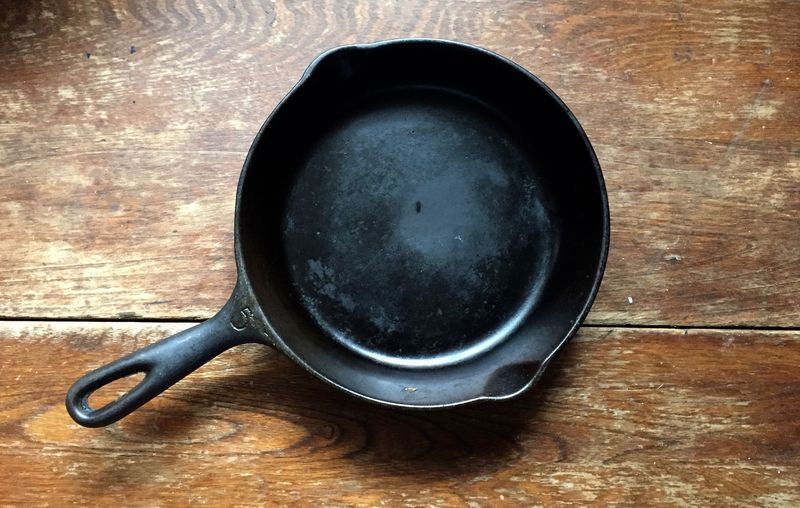Contrary to the belief of many, iron can come from both plant and animal foods. How much iron you can get from a specific source depends on the type it contains. Heme iron, which is derived from animal products, can increase iron absorption much more than nonheme products, which are plant-based. There are also certain foods that can inhibit iron absorption, which includes those containing tannins, polyphenols, calcium and phytates. Examples of these foods include milk, coffee and whole grains.
You might be wondering why you should know how to increase iron absorption. Iron is key to your organs getting the oxygen they need. Also, if your iron levels are low, you can suffer reduced mental capabilities and anemia.
Best Tips to Help Improve Iron Absorption
1. Consider an Iron Supplement
 Depending on your lifestyle and diet, you may not be able to get the iron you need through food alone. If this is the case, you may want to consider taking an iron supplement, either in liquid or pill form. You will not see results for a few months, so don’t give up if you don’t reach your goal right away. A blood test will tell you how much you need and then again if you have stored up what you need. It is a good thing to speak to your doctor before taking an iron supplement as it does have potential side effects. Some people who use it experience nausea, constipation and dark stools.
Depending on your lifestyle and diet, you may not be able to get the iron you need through food alone. If this is the case, you may want to consider taking an iron supplement, either in liquid or pill form. You will not see results for a few months, so don’t give up if you don’t reach your goal right away. A blood test will tell you how much you need and then again if you have stored up what you need. It is a good thing to speak to your doctor before taking an iron supplement as it does have potential side effects. Some people who use it experience nausea, constipation and dark stools.
2. Eat Vitamin C-Rich Foods
If you are getting your iron from a nonheme source, adding a food high in vitamin C will help iron absorption. In fact, studies have shown that adding the vitamin to your meal can increase your iron intake over 60%. Good sources of vitamin C include strawberries, tomatoes, oranges, melons and dark leafy vegetables like kale, as well as their juice form.
3. Eat Foods Rich in Vitamin A and Beta-Carotene
 Research has shown another way on how to increase iron absorption is to add vitamin A and beta-carotene to your diet when eating iron rich foods. Foods high in these nutrients include carrots, peaches, sweet potatoes, cantaloupe, spinach, squash, and kale. Beta-carotene rich fruits and vegetables are evident by their color, which is red and orange.
Research has shown another way on how to increase iron absorption is to add vitamin A and beta-carotene to your diet when eating iron rich foods. Foods high in these nutrients include carrots, peaches, sweet potatoes, cantaloupe, spinach, squash, and kale. Beta-carotene rich fruits and vegetables are evident by their color, which is red and orange.
4. Avoid Foods Containing Phytate
While whole grains can be good for you, it is not good for iron absorption. Why? It contains phytate, which inhibits the amount of iron you can intake. Even in the smallest amounts, it can reduce absorption by as much as 80%. However, eating vitamin C foods or meat can help make up for this.
5. Cook with Cast Iron
 So, it is not a myth. Cooking with a cast iron pan can increase iron content in your food by nearly 20%. Foods that naturally contain acid like tomatoes or cream promote the transfer of iron into the cooked dish. A study found that even if you don’t cook with a cast iron pan, you can place a piece of cast iron in a pan that you use to cook in on a regular basis and you will see an increase of iron in your foods.
So, it is not a myth. Cooking with a cast iron pan can increase iron content in your food by nearly 20%. Foods that naturally contain acid like tomatoes or cream promote the transfer of iron into the cooked dish. A study found that even if you don’t cook with a cast iron pan, you can place a piece of cast iron in a pan that you use to cook in on a regular basis and you will see an increase of iron in your foods.
6. Limit Calcium Intake to Recommended Daily Intake
You must consume calcium to have healthy bones, but as good as it is for bone health, it is horrible for iron absorption. Consuming calcium when consuming iron can reduce your intake by as much as 60%. However, do not worry. You can still get adequate amounts of both nutrients. The most effective way to do this is to eat foods rich in calcium or iron at different times, during separate meals. If you are taking supplements of each nutrient, take one in the morning and the other kind at night.
7. Reduce Coffee Consumption
 Do you need a cup of coffee to get your engine started in the morning? Then don’t try and increase your iron intake until a couple hours later. Drinking coffee is not a good way on how to increase iron absorption. It contains polyphenol, which decreases iron intake from nonheme sources. Foods to steer clear of when eating iron rich food or an iron supplement to improve your levels include coffee, tea, wine, certain legumes, and some fruits and vegetables.
Do you need a cup of coffee to get your engine started in the morning? Then don’t try and increase your iron intake until a couple hours later. Drinking coffee is not a good way on how to increase iron absorption. It contains polyphenol, which decreases iron intake from nonheme sources. Foods to steer clear of when eating iron rich food or an iron supplement to improve your levels include coffee, tea, wine, certain legumes, and some fruits and vegetables.
8. Eat a Well-Balanced Diet
Even if your diet consists of iron rich food, you may not have the iron levels your body requires. Often this is because you do not eat a balanced-diet and some foods are inhibiting your body’s ability to get the iron it needs. You need adequate levels of foliate, vitamin A and C, and riboflavin to absorb and use the iron you consume. Also, eating vitamin C food when eating iron rich food will help promote absorption.
9. Eat Nuts
 Seeds and nuts are high in iron. Adding them to your diet is a great way to add another iron food source. Types rich in iron include sunflower seeds, cashews, almonds, pumpkin seeds, pistachios and pine nut seeds. They are also good for your heart as they are full of omega-3 fatty acids.
Seeds and nuts are high in iron. Adding them to your diet is a great way to add another iron food source. Types rich in iron include sunflower seeds, cashews, almonds, pumpkin seeds, pistachios and pine nut seeds. They are also good for your heart as they are full of omega-3 fatty acids.
10. Add Legumes
Not all legumes are bad for iron absorption. For example, a cup of white beans can provide almost half of your daily iron intake. Other legumes that are iron rich include lentils, chickpeas, kidney beans and peanuts.
11. Eat Heme-Iron Food
 Heme iron is animal-based, which includes meat, seafood, chicken and fish sources. Eating heme iron is the best way to absorb the nutrient as your body can intake as much of 40% from it. The most effective of the sources are beef liver, chicken liver and oysters. Next effective source would be ground beef, dark turkey meat, top sirloin and chuck beef.
Heme iron is animal-based, which includes meat, seafood, chicken and fish sources. Eating heme iron is the best way to absorb the nutrient as your body can intake as much of 40% from it. The most effective of the sources are beef liver, chicken liver and oysters. Next effective source would be ground beef, dark turkey meat, top sirloin and chuck beef.
Heme iron sources include:
- Beef, particularly red meats
- Chicken
- Pork
- Veal
- Salmon, halibut, tuna, haddock or perch
- Oysters, clams and mussels
- Organ meats like liver
12. Add More Nonheme Iron
Nonheme iron is plant-based, which is a little harder to absorb than iron from heme foods. The best sources are leafy green vegetables like spinach and kale, as well as seeds and nuts. It can also be found in grains and other vegetables and legumes. When a food is iron-fortified, it is from a nonheme iron source. However, even though it is a good way on how to increase iron absorption, consuming nonheme foods still do not provide as much iron as eating heme foods.
Nonheme iron sources include:
- Dried apricots, plums and raisins
- Lentils and white beans
- Kale and spinach
- Nuts and seeds, like pistachios, pumpkin seeds and almonds
- Fortified wheat, rice, oats and cereal